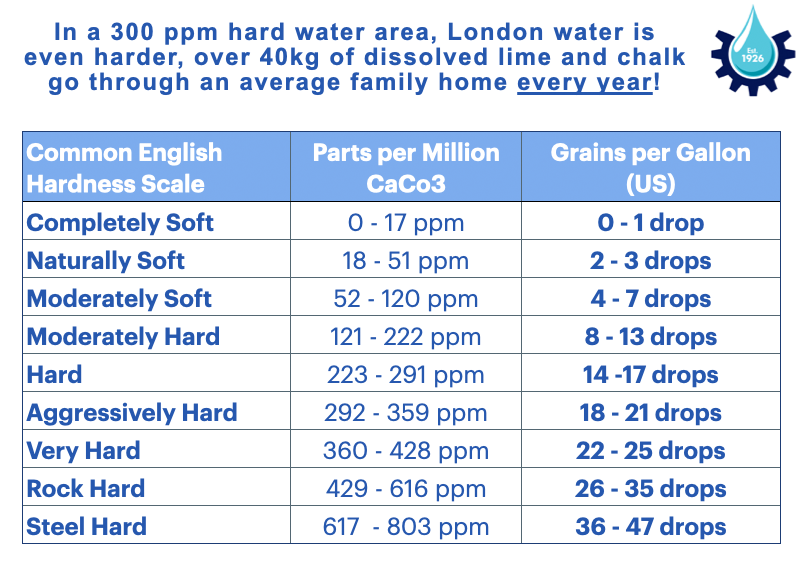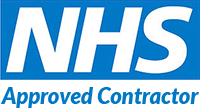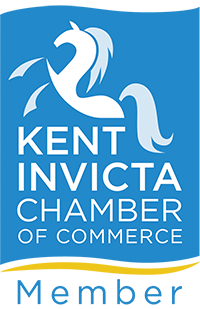6. Can You Drink Softened Water? (The Science & Safety)
If you're ready, Let's Look at the Facts
Can I drink softened water?
Yes… and it's even considered "wholesome".
The definition of "wholesome" is "conducive to or suggestive of good health and physical well-being".
In this context, 'Wholesome' means healthy and drinkable.
How Safe Is Softened Water to Drink?
Well, over a million people a year drink softened water — and in over 100 years of worldwide use and research, there are no documented cases of harm caused by drinking it!
That’s a pretty reassuring record!
However, it’s worth noting that over 85% of US households have hard water (compared to around 60% here in the UK), and in some parts of the USA — such as California — there are local regulations around softened water use.
Why Is That?
It mostly comes down to the scale of water softener usage in America: Approximately 30% of homes there have water softeners installed. And, much like traditional American cars, many US softeners tend to be large and inefficient, using a lot of salt during the regeneration process.
With so many homes using high-salt, high-water systems, some regions raised concerns about increased salinity affecting water quality and agricultural land. Which, when you think about it, makes perfect sense: If millions of homes are flushing large amounts of brine into the system, it’s bound to have an impact.
What About the UK?
The situation here is completely different. In the UK, just 8% of homes in hard water areas have water softeners installed — and importantly, the UK (and Europe) regulate softener performance, salt usage, and environmental standards much more closely.
In short:
In the UK, it’s a myth that you cannot drink softened water.
You absolutely can — safely and happily.
Wow! But I thought salt was bad for you?
It’s a common question:
If salt is used in softeners, doesn’t that make the water salty?
The answer is no.
The salt used in a water softener never enters your drinking water.
Salt is only used to create a brine solution that flushes away the captured chalk (calcium and magnesium) during the cleaning process, called Regeneration.
When your softener is running normally, it removes chalk through a process called ion exchange, swapping hardness minerals for tiny traces of sodium.
After each regeneration cycle, the softener thoroughly rinses itself with fresh water — leaving you with pure, fresh-tasting softened water, safe for drinking.
How Much Sodium Are We Talking About?
The traces of sodium left in softened water are extremely minimal — and well within safe limits.
Let's put this into perspective:
-
The UK Department of Health recommends a sodium intake of 2,400mg per day for adults.
-
A glass of softened water might add just 12–30mg of sodium — barely a fraction of your daily allowance.
What Do Health Authorities Say?
The World Health Organisation (WHO), in their Guidelines for Drinking Water Quality (Third Edition, 2003), state:
“No firm conclusions can be drawn concerning the possible association between sodium in drinking-water and the occurrence of hypertension. Therefore, no health-based guideline value is proposed. However, concentrations in excess of 200 mg/l may give rise to unacceptable taste.”
In short:
-
WHO does not set a health limit on sodium in drinking water.
-
They simply note that above 200mg/l you might notice a taste — but not that it’s unsafe.
In the UK, for infant formula preparation and for individuals on medically prescribed low-sodium diets, it’s recommended to keep drinking water below 200mg/l of sodium.
For everyday adult use?
Softened water is perfectly safe — and often even more enjoyable — to drink.
A quick note for parents:
If you’re preparing feeds for a young baby, there are a few extra things to consider.
We explain everything fully a little further down this page.
❓Did You Know There's Already Sodium in Mains Tap Water?
Our mains water across the UK naturally contains sodium — and this is perfectly normal.
The level of sodium is carefully regulated by the Drinking Water Inspectorate (part of DEFRA), who guide local water authorities to ensure a maximum of 200mg/l of sodium in drinking water.
This guideline shows that mains water with up to 200mg/l of sodium is considered safe for everyone to drink — unless medically advised otherwise. The limit is set conservatively to ensure water is safe even for people with medically restricted diets.
If you’d like to dive deeper, you can download the DEFRA Drinking Water Inspectorate document.
How Much Sodium is in Local Mains Tap Water?
The average sodium levels in local mains water are easily obtainable from water companies — and across Kent and Sussex, the levels are significantly below the 200mg/l guideline.
Here’s a snapshot of typical sodium levels in our area:
- Ashford – 13mg/l
- Brighton – 23mg/l
- Bromley – 28mg/l
- Canterbury – 15mg/l
- Chatham – 23mg/l
- Chislehurst, Orpington & Petts Wood – 48mg/l
- Croydon – 21mg/l
- Dartford – 22mg/l
- Deal – 22mg/l
- Dover – 13mg/l
- Eastbourne – 22mg/l
- Faversham – 12mg/l
- Folkestone – 17mg/l
- Haywards Heath – 35mg/l
- Herne Bay – 21mg/l
- Horsham – 20mg/l
- Kemsing – 17mg/l
- Maidstone – 26mg/l
- Sandwich – 18mg/l
- Sevenoaks – 23mg/l
- Thanet – 22mg/l
- Tunbridge Wells – 20mg/l
- Whitstable – 21mg/l
- Worthing – 15mg/l
How Much Sodium is Added During Softening?
When we soften water, sodium is added, but in very small amounts.
Here’s the technical detail:
-
For every 100mg/l of calcium carbonate hardness removed, about 46mg/l of sodium is added.
The important bit to know:
-
In all of Kent and Sussex, Surrey and South East London, after softening, sodium levels stay comfortably within the 200mg/l recommended limit.
-
It’s only in areas with extremely hard water (typically over 425ppm — like parts of Suffolk or Norfolk) that softened water might exceed this threshold (and some private supplies).
If you live in an area where mains water hardness is exceptionally high (which is rare in this region), we’ll always guide you personally to make sure you’re making the best choice for your home and family.
Here’s what softened water typically looks like, town by town:
- Ashford – 138mg/l
- Brighton – 148mg/l
- Bromley – 159mg/l
- Canterbury – 156mg/l
- Chatham – 187mg/l
- Chislehurst, Orpington & Petts Wood 191mg/l
- Croydon – 146mg/l
- Dartford – 163mg/l
- Deal – 166mg/l
- Dover – 153mg/l
- Eastbourne – 126mg/l
- Faversham – 130mg/l
- Folkestone – 162mg/l
- Haywards Heath – 81mg/l
- Herne Bay – 146mg/l
- Horsham – 94mg/l
- Kemsing – 101mg/l
- Maidstone – 174mg/l
- Sevenoaks – 187mg/l
- Thanet – 166mg/l
- Tunbridge Wells – 167mg/l
- Whitstable – 146mg/l
- Worthing – 138mg/l
How is hard water measured - and when is soft water "truly soft"?
There are a few different ways to measure water hardness, and you can often get an approximate hardness level by ringing your local water authority: South East Water (for East Kent) or Southern Water (for West Kent and Sussex), and Thames Water for London.
Alternatively, we’d be happy to come and test it for you, based on your home’s actual water supply.
Sometimes, we find that even different parts of the same street can have slightly different hardness levels! It sounds bizarre — but it all depends on which direction the water main comes in. (Some longer roads and estates might be fed from different sources.)
As professionals, when we test water, we prefer to use the Hach test kit, because it’s the most accurate method available outside of a laboratory.
The Hach test kit measures hardness using the universal method: Parts Per Million (PPM) — which is directly linked to the American measurement of Grains per Gallon.






